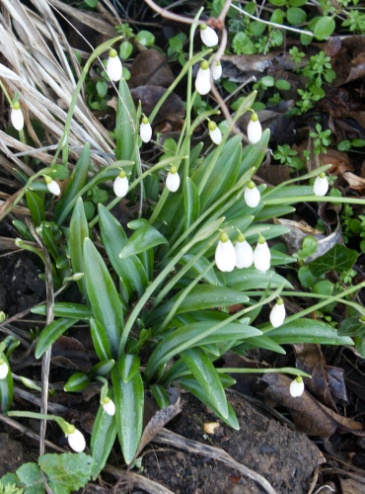By the end of February you should be thinking about ‘chitting’ your potatoes. ‘Chitting’ or sprouting first or second early potatoes by allowing several shoots to develop before planting, encourages faster growth, heavier crops and is a way of beating the weather. Timing is the key – start them off about six weeks before the last frost in your area, when the soil has warmed up – there is no point in planting them when the soil temperature is below 7 deg C (45 deg F), because they will not grow, so time it carefully. Put a layer of potatoes in a shallow tray or egg box with the ‘rose end’ (where most of the ‘eyes’ or dormant buds are concentrated) facing upwards, in a light cool frost free place at about 7 deg C (45 deg F), wait until they reach 2.5cm (1”) long and take care not to break the shoots when planting. For smaller crops of large potatoes, remove all but the three most vigorous shoots; leave all of the shoots for a higher yield of smaller tubers. Have horticultural fleece or sheets of newspaper standing by in case of unexpected frosts. If you chit several different varieties over a period of time, you will be harvesting new potatoes over several months.

It is widely accepted that snowdrops should be planted ‘in the green’ just after flowering and millions have done this successfully. However, some experts now suggest otherwise, arguing that you don’t lift and transplant any other type of bulb while it is still in leaf, so why treat snowdrops this way? Lifting plants while they are still growing damages the roots, weakens plants and prevents them from recovering after flowering and they fail to flower the following year. It is much better to mark the position of the clump and lift them after they have died down, ideally in June. If you plant snowdrops ‘in the green’, the way they are often sold , plant them as soon as possible, water well and reduce the leaf size if they show signs of stress, feeding with a dilute high potash liquid fertiliser to help them recover. Bulbs planted when dormant should be plump and ready to flower the following year. If you are dividing clumps, do so when they are at their peak.
February is a good time to prune Wisteria. Side shoots that were pruned back to five or six buds from late July to early August last year, or later, if they were still growing, can now be cut back again to two or three buds to encourage flowering and keep them under control. If you are growing Wisteria in warmer areas, or in a sheltered position, they can be cut back once to two or three buds in September.
There is still time to plant bare root trees, shrubs and hedges. They can be planted between leaf fall and bud burst, are usually available until early March and there are plenty of bargains around. Just make sure that they are planted at the same depth that they were in the nursery, water well during dry periods in the first year and mulch around them to suppress weeds and retain moisture.
Happy gardening! Matt


